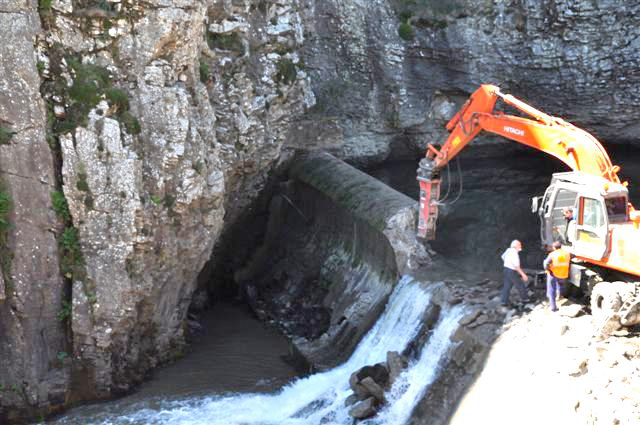Code
N09
Sector
Hydro Morphology
The complete description of the NWRM
Summary
Dams and other transversal barriers are obstacles crossing the river section and causing discontinuities for sediment and fauna. Removing them consists in destroying all the obstacles, restoring the slope and the longitudinal profile of the river, therefore allowing re-establishment of fluvial dynamics, as well as sedimentary and ecological continuity.
Illustration(s)

Dam being removed for restoration of reference condition hydromorphology
Source: Ignacio Rodrigez’s presentation, NWRM Workshop 1
Possible benefits with level
| Benefits | Level |
|---|---|
|
BP8 - Reduce pollutant sources
|
Low
|
|
BP10 - Reduce erosion and/or sediment delivery
|
Medium
|
|
BP12 - Create aquatic habitat
|
High
|
|
ES2 - Fish stocks and recruiting
|
High
|
|
ES4 - Biodiversity preservation
|
High
|
|
ES7 - Flood risk reduction
|
Low
|
|
ES8 - Erosion/sediment control
|
Medium
|
|
ES12 - Navigation
|
Medium
|
|
ES14 - Energy production
|
Medium
|
|
PO1 - Improving status of biology quality elements
|
High
|
|
PO2 - Improving status of physico-chemical quality elements
|
Low
|
|
PO3 - Improving status of hydromorphology quality elements
|
High
|
|
PO7 - Prevent surface water status deterioration
|
Low
|
|
PO9 - Take adequate and co-ordinated measures to reduce flood risks
|
Low
|
|
PO10 - Protection of important habitats
|
High
|
|
PO11 - Better protection for ecosystems and more use of Green Infrastructure
|
High
|
|
PO13 - Better management of fish stocks
|
High
|
|
PO14 - Prevention of biodiversity loss
|
High
|
Case study(ies)
